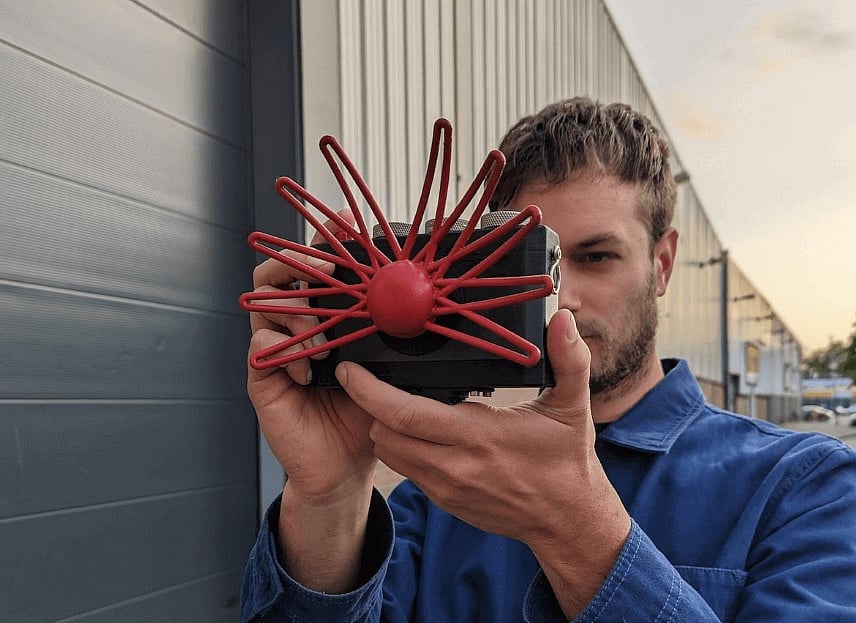
Just when standalone cameras are losing the market to premium smartphones, Dutch engineer Bjørn Karmann as part of his side personal project created a ground-breaking wonder camera without lens that can capture stunning images.
As you can see in the cover photo, Karmann's camera looks like a fancy prop lifted from a Sci-Fi movie set. It has no lens but a strange crimson-hued TV-aerial-like attachment in a spider web shape.
And, at the top, it has three dials and a red shutter button, and at the back, a touch-sensitive viewfinder screen.
So, what's powering this lens-less camera? Well, as Google and Microsoft (with OpenAI) are battling out to deliver the best internet search experience with respective generative Artificial Intelligence (AI) chatbot Bard and ChatGPT, Karmann is using similar Stable Diffusion API, and Noodl, a custom-built software built using Python language, a Rasberry PI 4 processor to run text-to-image generator.
It should be noted that the strange camera shell is built using a 3D printer and Karmann has put all the required circuits and processors to run the device.
Karman says this new state-of-the-art camera takes inspiration from the lesser-known vermin Star-nosed mole, which spends its entire life underground. As many would now have guessed, the weird nose looks similar to Paragraphica's front antenna. Though it has eyes, it is non-functional and instead, it uses the nose's tentacles, which come with more than 25,000-minute sensory receptors. It helps the mole to create a picture of the surroundings in its head and navigate through the pitch-dark tunnels underground.
Similarly, with Paragraphic, the user has to feed the location data and parameters such as the description of the place for generative AI to visualize the 'photo' of a specific place and moment.
With the first dial, the user has to adjust the radius of the surrounding from the point of the camera. It uses GPS to search for places and other data of location. The second dial is used the control the noise (0.1 to 1.0) of the photo and the third dial is used to control the guidance scale. Higher the number, the sharper the image and if it is lower, the photos will appear blurrier.
As the name implicitly suggests, it needs a paragraph of information containing a brief description of the place, GPS data, and weather, temperature, and date, to generate a real image of the scene in front of the camera.
This new innovative Paragraphica camera is a promising tech and has great potential to upscale the quality of the smartphone camera.
Get the latest news on new launches, gadget reviews, apps, cybersecurity, and more on personal technology only on DH Tech.
